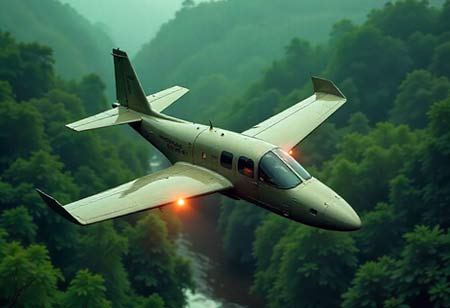Advanced marine technologies, including unmanned systems, AI, enhanced communication, and navigation, are transforming military operations, improving precision, adaptability, and security in modern maritime combat.
FREMONT, CA: As nations navigate an increasingly volatile geopolitical landscape, integrating advanced marine systems is essential for maintaining security and ensuring operational superiority. The technology’s ability to project naval power across vast oceanic expanses and enhanced situational awareness equips military forces with a decisive edge in safeguarding national interests.
Over the years, innovations such as unmanned marine vehicles, advanced navigation tools, and specialised underwater warfare equipment have bolstered military efficiency and effectiveness. Concurrently, incorporating artificial intelligence and machine learning has accelerated decision-making processes, providing invaluable insights for tactical planning.
These technological breakthroughs are designed to enhance combat readiness and minimise collateral damage through precise targeting, efficient intelligence gathering, and robust surveillance, providing a strategic advantage in the evolving maritime theatre.
Exploring Unmanned Marine Systems
Continuous innovation in unmanned marine systems enhances capabilities and minimises risks while offering significant advantages in surveillance, reconnaissance, and warfare. They improve operational safety and efficiency by reducing human involvement in hazardous environments, enabling precise tasks like intelligence gathering, mine detection, and combat roles, thereby boosting military versatility.
These systems are particularly valuable due to their enhanced surveillance capabilities, which provide real-time data and high-resolution imagery. This enables military forces to gain invaluable insights into enemy movements and potential threats, improving situational awareness. As a result, the integration of unmanned marine systems into military strategy strengthens operational effectiveness while contributing to long-term efficiency, reshaping the landscape of modern warfare.
Optimising Communication and Navigation Systems
The synergy between advanced communication and navigation systems supports swift, secure information flow, reinforcing the effectiveness and operational security of military missions at sea.
The integration of satellite communication technologies significantly extends the reach and reliability of communication channels, enabling real-time data exchange that is critical for making informed, strategic decisions during naval missions. This advancement ensures that military forces maintain continuous, reliable communication across vast oceanic expanses.
In parallel, incorporating GPS technology provides military vessels and personnel with precise navigation, enabling accurate position tracking and enhancing tactical manoeuvres in complex marine terrains. The integration of these technologies enhances not only operational effectiveness but also safety by reducing errors in critical situations.
The Evolution of Integrated Marine Solutions
In the context of amphibious attacks, marine technology significantly enhances planning and execution by improving reconnaissance, navigation, and communication systems. These advancements ensure seamless coordination, rapid troop deployment, and tactical superiority in challenging coastal environments, enabling the swift establishment of a foothold in key strategic areas.
Marine technology also plays a key role in detecting and neutralising sea mines through unmanned underwater vehicles with advanced sonar and imaging systems. These cutting-edge tools allow military forces to clear naval routes and protect maritime infrastructure from potential threats, thus minimising personnel risk and ensuring critical asset safety.
The continued evolution and integration of these technologies promise to reshape the landscape of modern combat further. Prioritising technological superiority in this way allows nations to maintain agility and responsiveness through complex security challenges, enhancing their ability to tackle emerging threats with precision, adaptability, and resilience. This dynamic transformation promises to fortify defence forces, ensuring their continued effectiveness in an increasingly complex global security environment.









